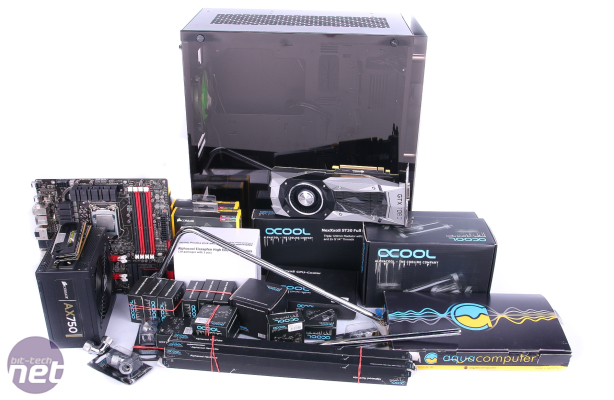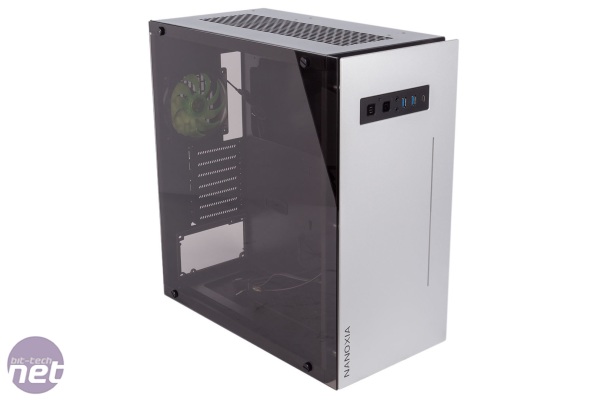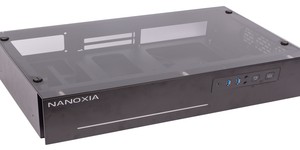Nanoxia Project S Water-Cooling Build: Part One
November 4, 2016 | 10:26
Companies: #alphacool #bit-tech #corsair #nanoxia #nvidia

Nanoxia Project S Water-Cooling Build: Part One
We're obviously big fans of all things modding and water-cooling here at bit-tech. So, in a change from our usual content, we've teamed up with Nanoxia, Corsair, Alphacool, Aqua Computer and CableMods to create a modern water-cooled gaming system. While we've opted for an Nvidia GeForce GTX 1080, the rest of the system likely bears resemblance to the PCs of many reading this. We wanted to focus on the water-cooling aspect of the build rather than using cutting-edge hardware and show that even older but still very functional systems can be given a rather dramatic facelift.Click to enlarge
The water-cooling side of things is very much cutting-edge though. We've used the latest rigid tubing and fittings from Alphacool plus its latest pump and reservoir along with a 360mm Nexxxos radiator. Aquatuning has kindly donated an Aqua Computer GTX 1080 Kryographics water block and we've got a bunch of Corsair's new HD120 RGB fans as well.
We'll be taking a look at the components you need to water-cool a modern system, how to choose them and of course how to install them. We've kicked the level of difficulty up a notch by using rigid tubing too, so we'll be looking at how to cut it to size and make sure your loop is leak-proof. If you already know all this, then we can at least offer you some eye-candy along the way as well as what will hopefully be an awesome system at the end too.
The Case
If you have a specific case in mind when you're water-cooling your system, it will likely be the thing that dictates what water-cooling hardware you install inside. However, it's possible to install a half decent water-cooling system in most cases these days. Some, of course, are better than others in terms of how easy they make it, while others are big enough to allow for multiple graphics cards and overclocked CPUs to be cooled with multiple, massive radiators but, in general, most cases offer water-cooling support enough to deal with a single high-end GPU and CPU.The Nanoxia Project S is a classic example. You get ample space for a 360mm radiator in the roof (when it's in its vertical orientation), leaving the front of the case free for mounting your pump and reservoir for a problem-free build. Even better is that the Project S's inner section is removable, sliding out on wheels so you can just deal with it on your desk and roll it back in when you've built the water-cooling system around your hardware.
Click to enlarge
The Radiator
As a bare minimum you want a single 120mm radiator for each major component in your loop. That's an easier way of understanding heat loads without trying to calculate the thermal prowess of your cooling system, watt by watt, and matching it to the heat load being dumped into your coolant by your system. After all, a Corsair H75, for example, is enough to cool even an overclocked, monstrous LGA2011 processor, albeit with considerable fan noise.A second could then deal with a graphics card if you used Corsair's HG10 adaptor, meaning that a third would simply add to the cooling ability available and allow you to wind your fans down to quieter levels. It's all relative, of course, as ambient room temperature can also have an impact, but as a general rule of thumb, it works. We've opted for a single 360mm radiator, with a single row of Corsair HD120 RGB fans - with those ramped up to full speed, this will be more than enough cooling power to deal with our quad-core CPU and high-end graphics card.
Click to enlarge

MSI MPG Velox 100R Chassis Review
October 14 2021 | 15:04











Want to comment? Please log in.